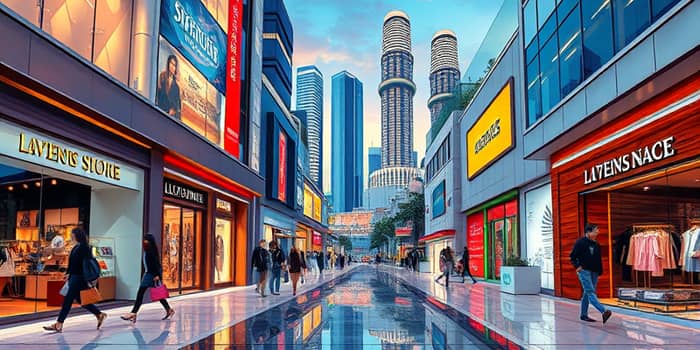
As global luxury markets face headwinds and slower growth, Asia stands out as a beacon of resilience. While mature markets in North America and Europe grapple with weaker demand, the Asian luxury sector continues to outperform expectations, underpinned by demographic shifts, urbanization, and evolving consumer values.
In 2025, Asia’s luxury goods revenue is projected to reach USD 216.93 billion, supported by a compound annual growth rate of 4.84% through 2029. This remarkable performance highlights the region’s pivotal role as the primary engine of global luxury expansion.
Between 2019 and 2024, the luxury industry experienced an unprecedented surge in sales, fueled by pent-up travel demand and government stimulus measures. However, this spectacular growth was followed by a phase of post-pandemic normalization and macro uncertainty, as markets recalibrated to sustainable levels of consumption.
During the rebound, many brands capitalized on localized production and supply chain innovations to maintain pricing power. Yet, rising inflation and shifting consumer priorities have tempered growth in established markets, prompting brands to reallocate resources toward Asia’s burgeoning opportunities.
China remains the dominant force in Asian luxury retail, accounting for 40% of all new store openings. Although recent surveys indicate that over 60% of Chinese consumers plan to moderate their high-end purchases due to income concerns and tariff impacts, the overall momentum is maintained by continuous urban expansion and rising affluence.
Meanwhile, the ASEAN bloc has emerged as a high-potential frontier. The region’s hard luxury segment—encompassing fine jewelry and timepieces—was valued at USD 4.4 billion in 2024 and is on track to double by 2035, thanks to rising incomes and shifting consumer tastes.
Across Asia-Pacific, a new generation of shoppers is reshaping the luxury landscape. Beyond traditional store experiences, consumers seek authenticity, sustainability, and digital engagement. Brands that adapt to these evolving desires gain a competitive edge.
This diversification of offerings underscores a broader democratization of luxury, where exclusivity coexists with accessibility in a dynamic retail ecosystem.
Online luxury sales in Asia-Pacific have exhibited volatility over the past year, swinging between significant declines and sharp rebounds. After a -14% year-on-year dip in February 2025, the digital channel remains indispensible, particularly for younger, tech-oriented consumers.
Leading brands are forging seamless omnichannel journeys, blending immersive in-store experiences with personalized digital touchpoints. Innovations such as virtual try-ons, livestreamed fashion shows, and AI-driven concierge services are not mere novelties—they form the foundation of a future-proof retail strategy.
Despite Asia’s strong performance, several headwinds warrant careful navigation. Brands must remain vigilant to geopolitical tensions, evolving trade policies, and the potential for consumer fatigue as economic conditions fluctuate.
Understanding these dynamics is crucial for crafting resilient business models that can withstand cyclical slowdowns and unexpected shocks.
To capitalize on Asia’s robust luxury market, brands and retailers can implement targeted strategies aligned with local consumer expectations and market realities.
Looking ahead, Asia’s luxury sector is poised for continued expansion, driven by urbanization, digital adoption, and a deepening appetite for premium experiences. Potential catalysts include stabilization of China’s real estate sector, renewed confidence in global equity markets, and further innovation in product design and materials.
These figures illuminate the terrain for future growth—and the importance of agility, cultural insight, and strategic investment.
Asia’s luxury retail sector defies the broader global slowdown, offering a blueprint for resilience and innovation. By understanding local market drivers and embracing digital transformation, brands can forge deep connections with discerning customers across the region.
As the world recalibrates to a new economic landscape, the lessons from Asia’s luxury resurgence hold universal value: prioritize authenticity, invest in omnichannel excellence, and remain adaptable to emerging trends. In doing so, businesses not only thrive in Asia but also lay the groundwork for sustainable success in an ever-evolving global market.
References













